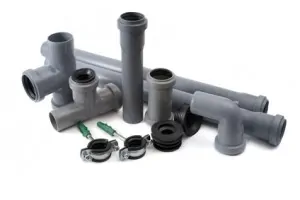Oct . 10, 2024 23:13 Back to list
ppr piping system factories
PPR Piping System Revolutionizing Plumbing with Innovation
In the contemporary world of construction and plumbing, the demand for efficient, reliable, and sustainable piping systems has never been more pronounced. Among the various materials available, Polypropylene Random Copolymer (PPR) piping systems have emerged as a leading choice for many factories and construction projects. This article delves into the advantages of PPR piping systems, explores their manufacturing processes, and discusses their applications in various industries.
Understanding PPR Piping Systems
PPR pipes are made from a thermoplastic polymer, known for its excellent resistance to chemicals and high temperatures. They are manufactured through an extrusion process, ensuring seamless lengths of piping that are both flexible and durable. One of the primary characteristics of PPR pipes is their ability to withstand high internal pressures, making them suitable for both hot and cold water applications.
Benefits of PPR Piping Systems
1. Durability One of the most significant advantages of PPR pipes is their long lifespan. With resistance to corrosion, scaling, and a wide range of chemicals, PPR is less likely to deteriorate over time compared to traditional materials like metal or PVC. This durability translates to reduced maintenance costs and fewer replacements over the years.
2. Thermal Efficiency PPR pipes have low thermal conductivity, which means they maintain the temperature of the water flowing through them. This property is particularly beneficial in hot water applications, as it reduces energy consumption and improves the efficiency of heating systems.
3. Lightweight and Easy to Install The lightweight nature of PPR pipes simplifies handling and installation, resulting in lower labor costs and faster project timelines. Their flexibility allows for easier maneuvers in tight spaces, which is a considerable advantage during installation in complex building structures.
4. Environmentally Friendly PPR pipes are recyclable and produced from non-toxic materials, making them a more sustainable choice for plumbing systems. Their longevity also means fewer resources are used over time for repairs and replacements, further reducing their environmental impact.
5. Cost-Effectiveness While PPR pipes are initially more expensive than some other piping materials, their long lifespan and reduced maintenance costs make them a cost-effective solution in the long term. Factories and construction projects can benefit from the lower operational costs associated with PPR piping systems.
ppr piping system factories

Manufacturing PPR Pipes
The manufacturing process of PPR piping systems involves several key steps
1. Material Selection High-quality polypropylene random copolymer is sourced from reputable suppliers to ensure the best physical properties.
2. Extrusion The selected materials are fed into an extruder, where they are heated and mixed until they reach a molten state. The molten mixture is then forced through a die to form continuous lengths of pipe.
3. Cooling and Cutting The extruded pipes are cooled using water or air and then cut to predetermined lengths. Quality control measures are implemented at this stage to ensure that the pipes meet industry standards.
4. Testing Each batch of pipes undergoes rigorous testing for pressure resistance, durability, and chemical resistance. This quality assurance step is crucial in maintaining the integrity and reliability of PPR piping systems.
Applications of PPR Piping Systems
PPR pipes are used across a variety of industries. In residential plumbing, they are ideal for hot and cold water supply systems. In commercial applications, PPR is increasingly utilized for heating, chilled water systems, and even chemical transportation due to its superior chemical resistance. Additionally, the agricultural sector benefits from PPR piping for irrigation systems, ensuring efficient water distribution without the risk of corrosion or scaling.
Conclusion
As industries continue to evolve, the demand for advanced solutions in plumbing will only increase. PPR piping systems, with their myriad advantages and sustainable attributes, position themselves as a favored option for factories and construction projects alike. With ongoing advancements in manufacturing technology and increased awareness of environmental sustainability, PPR pipes are set to remain at the forefront of future plumbing innovations.
-
High-Quality PVC Borehole Pipes Durable & Versatile Pipe Solutions
NewsJul.08,2025
-
High-Quality PVC Perforated Pipes for Efficient Drainage Leading Manufacturers & Factories
NewsJul.08,2025
-
High-Quality PVC Borehole Pipes Durable Pipe Solutions by Leading Manufacturer
NewsJul.08,2025
-
High-Quality PVC Borehole Pipes Reliable PVC Pipe Manufacturer Solutions
NewsJul.07,2025
-
High-Quality UPVC Drain Pipes Durable HDPE & Drain Pipe Solutions
NewsJul.07,2025
-
High-Quality Conduit Pipes & HDPE Conduit Fittings Manufacturer Reliable Factory Supply
NewsJul.06,2025

